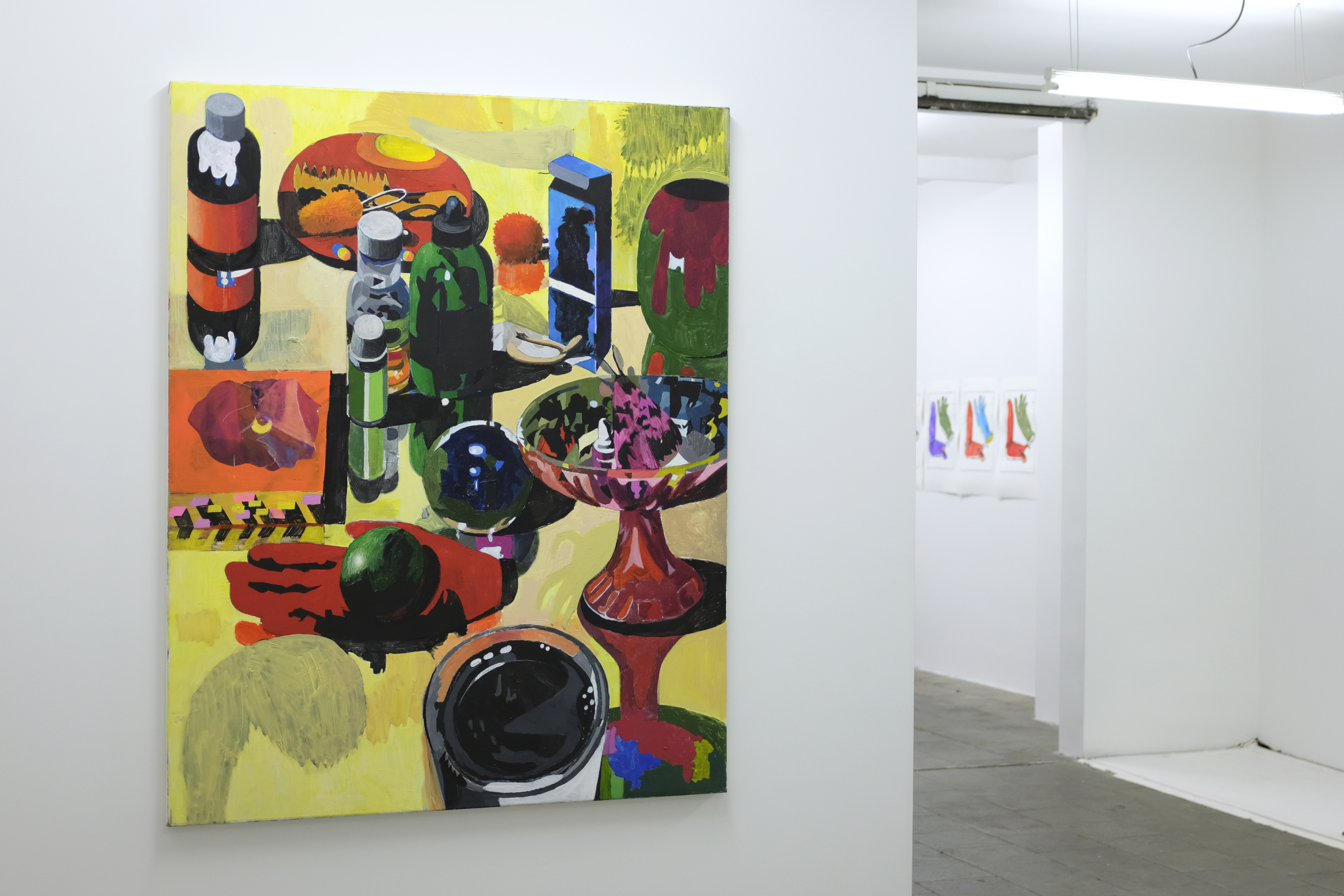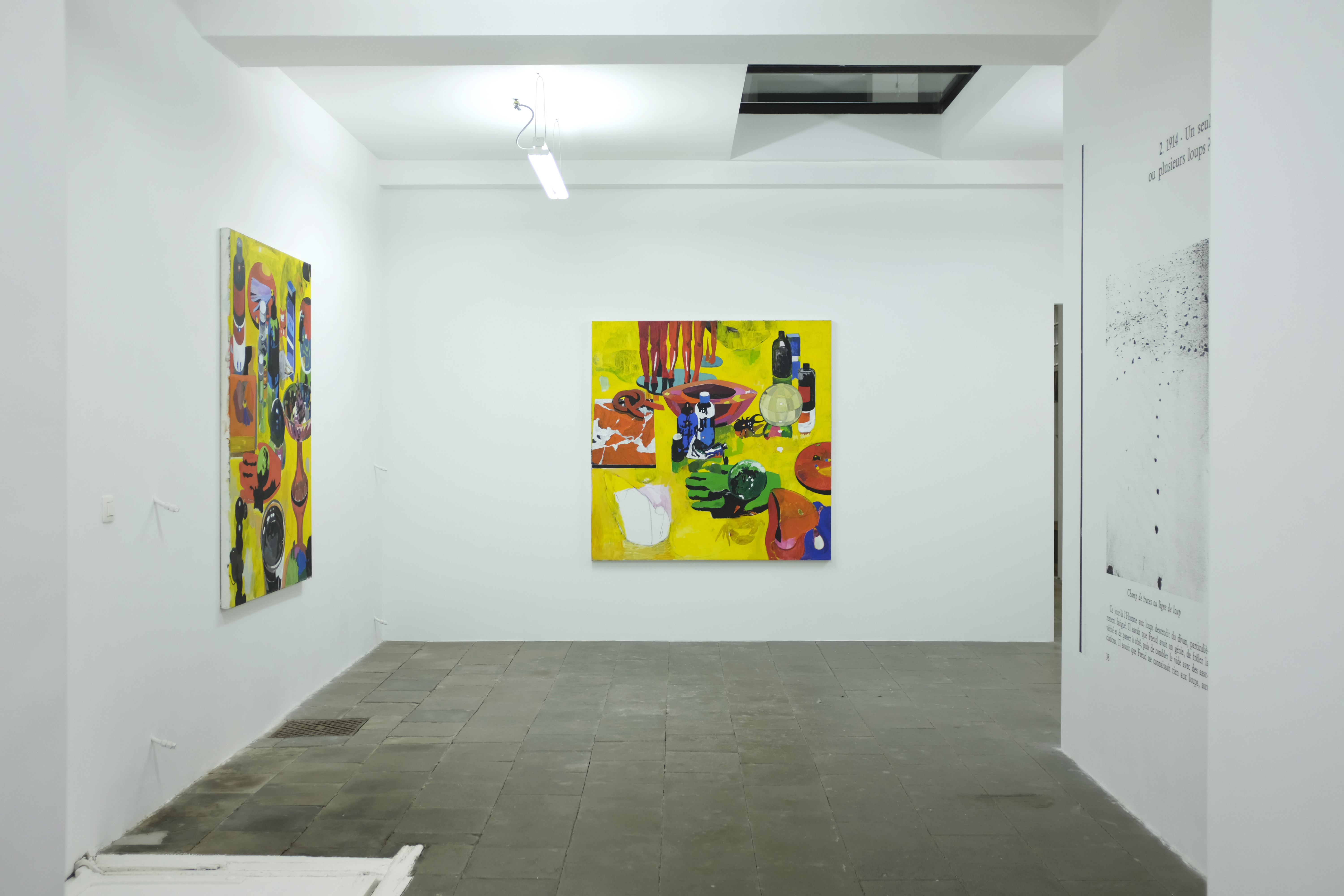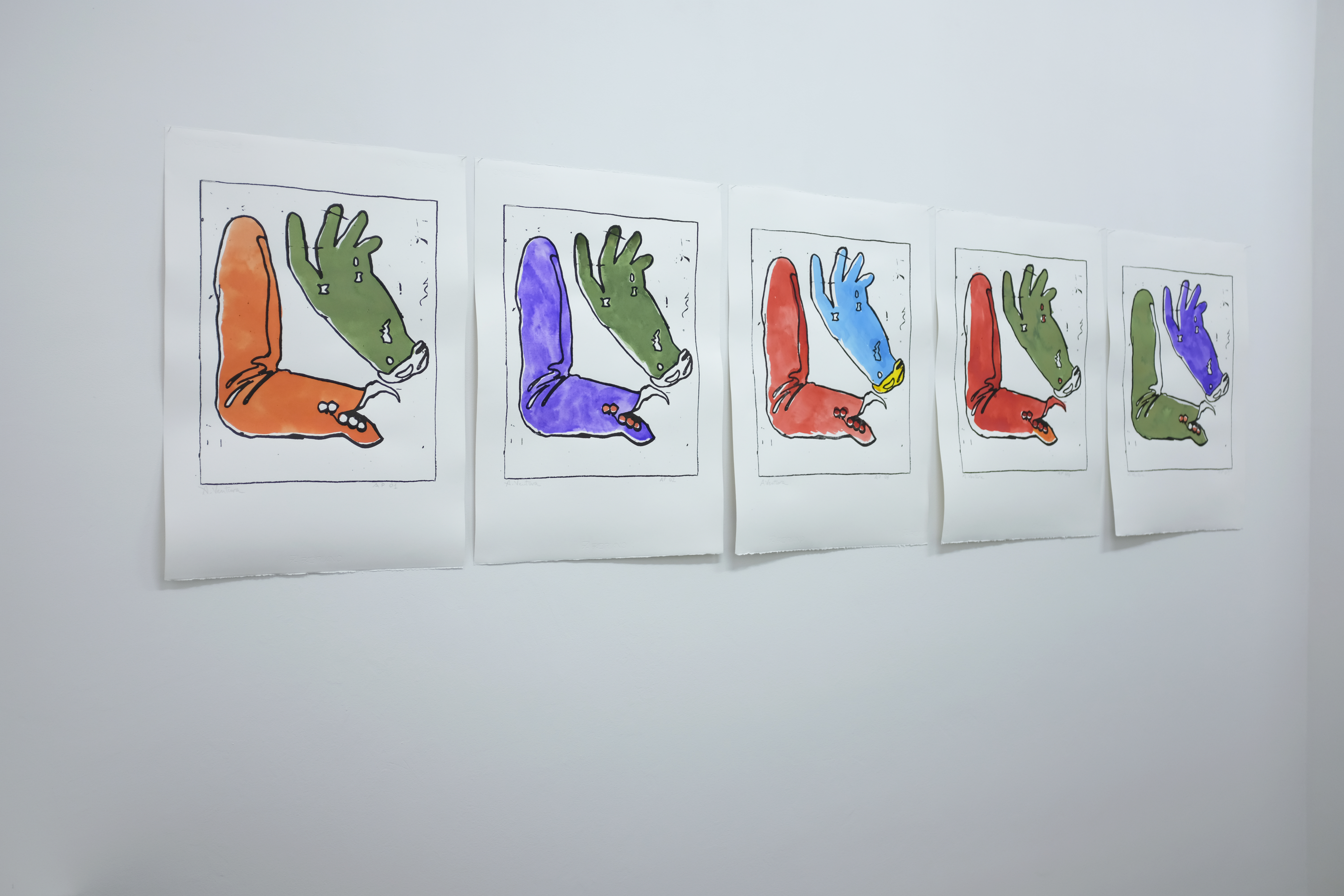



Andrea Ventura - The most fascinating aspect of still life for me is that it offers me a specific space inside which I am able to do my work. In this limited, structured space, that has rules, I feel, paradoxically, free to transgress the rules themselves.
When I am doing still lives, for example, I never work with a source of light or with the physical aspect of things in mind, because I wanna create a separate reality for every single object. At the same time, though, I want the objects to live together in a harmonious manner. Every object for me is a problem to solve, and I also want to have fun while solving it. I never solve a multitude of objects as a whole, though: I like to find the most suitable solution for each one of them. In still life I am dealing with bodies, which are a whole but at the same time they are separate from one another. In painting each object it’s as if I were trying to remember how it has been, the life it has lived, that at this point no longer has anything to do with the initial reality of that object.
Yves Gevaert - Is all this becoming a fiction, at a certain point?
Andrea - It certainly must be a fiction. So much so that I eliminate certain rules. For example if one paints objects in a naturalistic manner, there are rules that one must follow: a light reflects in a certain way, a color is reflected in another object, and so on. The rule is that each object is in relation to the others in an indis- soluble way. I love the idea, on the other hand, to solve them as if they were separate bodies, then put them together artificially. This way you create a musical effect: an object has some dissonances, that may be mitigated in another one and emphasized in yet another one.
Yves - It appears to me that you are working a bit on the resonance of each object.
Andrea - More on the resonance than on the idea of physical correla- tion of objects that live on the inside of the same space. I try to eliminate that aspect. What endears me in the object is its inside, I want to find out what’s in there. I may start from certain images, but in the process of painting an image I don’t look at them anymore.
Yves - I’d like to speak about your fascination with the house of Sigmund Freud, when you visited it in London. Why did you begin this series with a painting of sculptures that belong to Freud’s collection?
Andrea - My fascination owed in particular to two elements that were present in his office, that later became the spark for my still lives. On the one hand the disorderly collection of statues, big and small, objects mainly Egyptian and from ancient Greece. On the other hand the presence of the bed, this parallelepiped surrounded by shapes, as if those had been witnesses of what was going on inside the room.
I always like the idea of bed: an object on which you are born, you die, you dream, you love, you read, you sleep. What interested me in Freud’s office, initially, was the image as a whole: the characters of the statues witnessing what is happening on the psychoanalyst’s bed. Then I eliminated the entire bed part and I wanted to animate the characters, as if they had thoughts or moods, as if they were pesky, naughty, empathic gnomes. The following step was to take out what, for me, was the human aspect of these figures and transform them into objects, so that I could end up having still lives. At some point, indeed, I wanted to abandon the human physiognomy of these objects and make them into something else. Instinctively, in the second picture I made, I painted only common objects: a tray, a vase, a ball, a bottle, a small plate.
Finally I dared to manipulate these objects, to deconstruct their nature to create parallel stories within their inside, searching for something new. As we said before, it’s about creating another story within the container. A little bit like a Chinese boxes game, composed in a way that let them have power as a whole, still as separate objects but part of something.
To me painting is something that is built during the work. A part of you acts unconsciously in one direction, you have the feeling you are following a path, but the moment you finish and you feel like you have completed it, you take a step backward and you realize you created something different. I inserted teeth as an idea of interference, like a danger, like something biting you, disturbing you, an element that gives you the idea to be there in order to disrupt your tranquillity.
Yves - Is the element of transformation important in your painting?
Andrea - Transforming an object into something else: that for me was a fundamental step. Not seeing the physicality of things but building them, turning them upside down: making a shadow become a white reverberation of a black object, for example. The label is the only element that reflects the label’s color and the rest turns to white. In this picture for example I created a mini story, an act of violence. I really like the game of transforming something, of transforming an object. It’s perfect for still lives. Take a sphere for example: it’s very beautiful because it’s a completely closed, absolute, geometrical shape, but inside it you can do things, with colors or holes.
Yves - These objects are like small places. The place is a bit of an obsession in your painting.
Andrea - True. I painted houses and landscapes inside these objects.
Yves - Is yellow important?
Andrea - Yellow is the light, but a light that is absolutely not real. As if it were the yolk of a melted egg. Most of all yellow allows me to use black on objects and create a strong contrast, to define them in an almost sculptural way, as if I could dig into them.
Black and white allow me to dig holes inside an object, as if I were working with something physical in my hands.
Yves - You named this picture “Vanity”: it’s strange to associate a still life with vanity. Vanity is Spanish.
Andrea - Indeed I put in combs, fake mustache, a brush, little scissors, toothbrushes, fake teeth, a bottle of perfume. A sphere above a mirror. I also wanted something scarier, as if the sphere were a mask.
Yves - It seems like for you even a portrait is a still life?
Andrea - In some ways portrait has helped me a lot in solving still lives. Portrait for me is always a shape, a well defined object, inside which anything is possible. When I make a portrait I am free. My freedom is somehow proportionate to the space I cannot exit from.
I need the authority of a consolidated form in order to enact my little rebellion. It’s as if I cut my teeth with portraits, which are a form of authority much stronger than objects. You see? I need to have an authority to oppose. Potentially, with this approach I would go on forever. When I do portraits I always try to paint as if I were removing one thin layer of skin, and I use the same approach with still lives, so in a way also the objects appear “skinned” or “skinless”.
Yves - You use yellow like figured bass in music.
Andrea - I build the sonority of individual objects. Yellow covers another level of disappeared objects—painted then erased—that nevertheless shine through color at a subterranean level. Things that are no longer there but left a shadow of themselves.
Yves - These glasses are fascinating.
Andrea - They come from the very practical need to put an object inside the painting. For example, I may have an image painted, sketched or traced out on the glass and then, while keeping the distance from the canvas I am going to paint, I look through the glass I drew on. I get farther and I get closer, magnifying or downsizing the image, as if I were doing tests to see if it works, in order to draw it again later. A sort of very rudimentary camera oscura, because everything remains very imprecise.
After a while all these glasses accumulated and I realized that, having done several drawings on each glass, I wound up having many
random, non-calculated compositions, originated from an operation that was conceived for a different end. The glass was initially just a tool: the way I sketched it and treated it, gave it the qualities of something that wasn’t made to be or to have an aesthetic.
The drawing on the glass came to exist only to be functional. It was most of all the result of accumulation, because at the end of a painting I may have had seven or eight of those, I often erased and then drew again on the same glass. At some point I started not to erase them, I set them aside. This way, in time, I had created a still life almost without thinking about it.
I often tried to use the glasses I preserved, for example by putting them on a white paper and photographing them, as a matrix to create another purely random image. Besides, when you often re use the same glass, even when you try to delete it with alcohol, the lines of what was drawn before still remain there. That also becomes part of the final result, which is a painted object with traces or lines under its edges, that belong to the previous object, even to the ten previous objects.